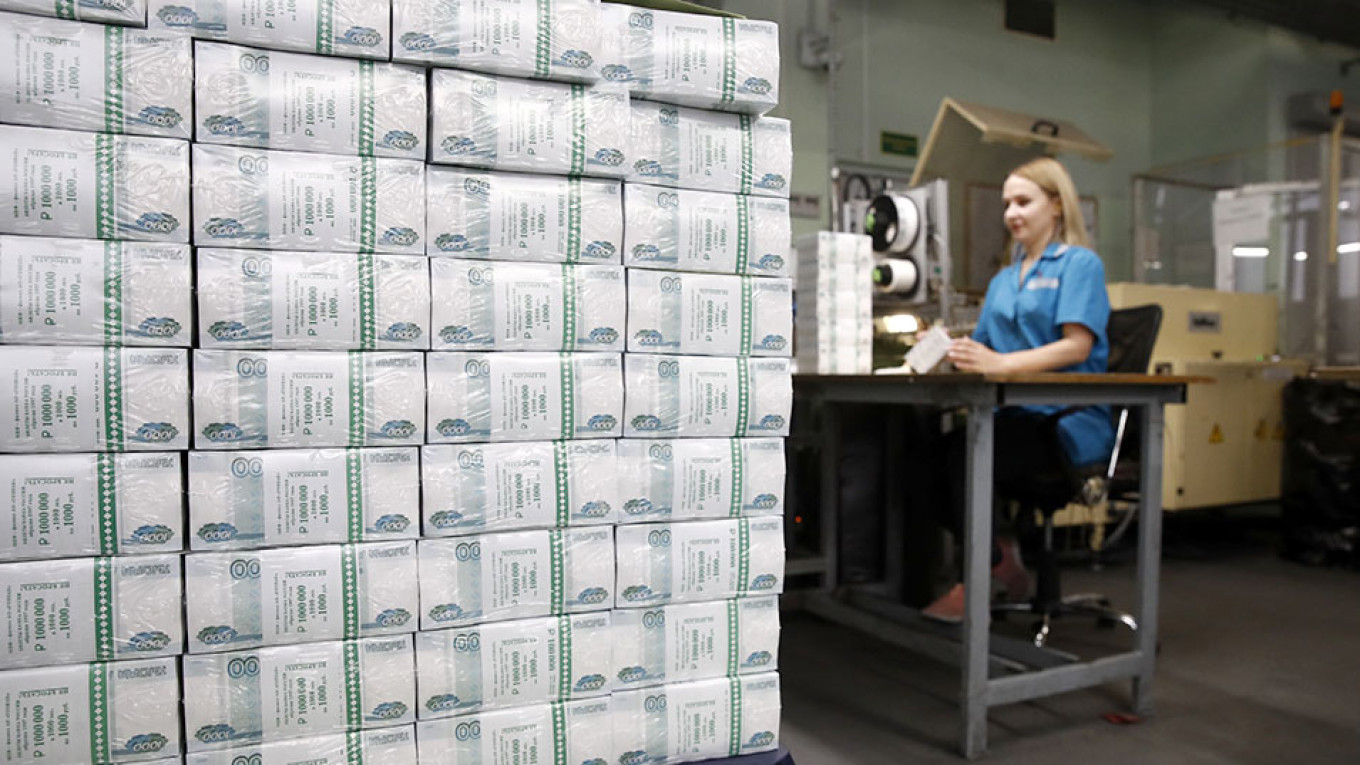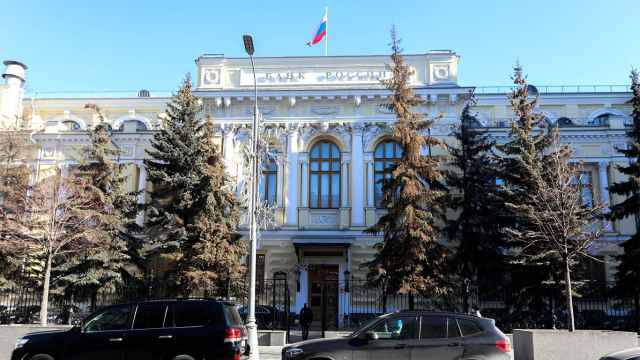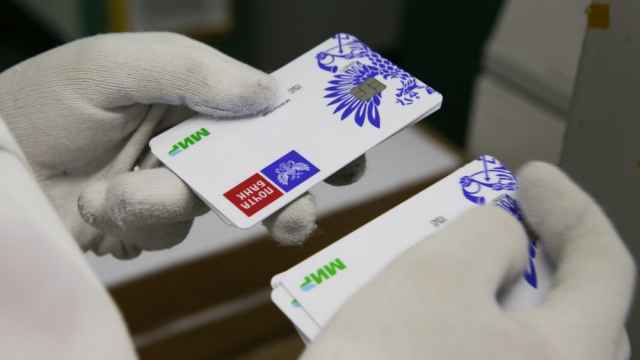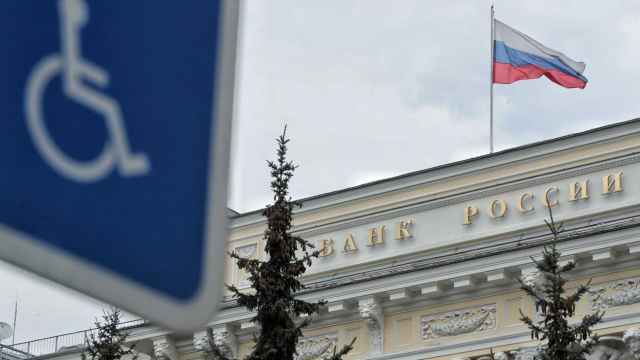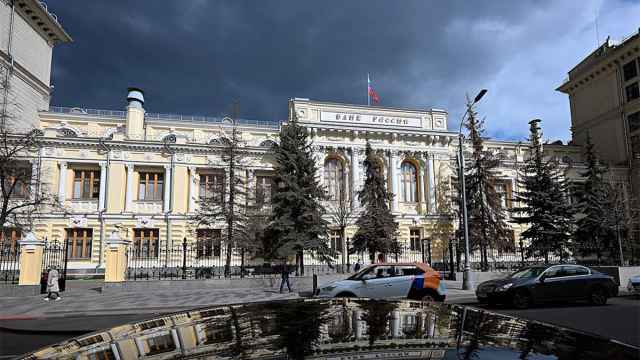Russia’s domestic ratings agency, Russian Analytical Credit Rating Agency (ACRA), has given Russia a long-term foreign currency credit rating of A- and a local currency credit rating of A-, significantly higher than the three leading international ratings agencies.
“Russia’s A- sovereign credit rating is supported by the low level and sustainable structure of public debt, strong external position, and an effective monetary policy coordinated with fiscal policy that significantly improves macroeconomic stability,” ACRA said in a press release.
“The rating is constrained by the low potential for economic growth, limited diversity of exports, lack of transparency of the Russian government’s obligations to a number of state-owned companies, weakness of institutions and the threat of new sanctions capable of limiting investment and hindering technology-based cooperation and trade with potential foreign partners,” it added.
Set up in 2015, ACRA has become part of the woodwork. An ACRA rating is not just needed to issue ruble denominated bonds — Russia’s Central Bank has written into the regulations that local banks have to get at least an A grade rating from ACRA in order to hold a banking license.
At the same time, thanks to sanctions the big three international agencies — S&P, Moody’s and Fitch — have been slowly pulling back from the Russian market and have chosen not to re-accredit themselves as local agencies with the Central Bank. Today, about 50 of the top Russian companies maintain an international rating. ACRA has expanded and now rates some 200 Russian entities.
This is the second sovereign rating ACRA has assigned. Earlier this year it issued a sovereign rating for Switzerland that seems to have been a benchmarking exercise on the part of agency as it worked out its all-important methodology. Many of ACRA's current staff have been poached from Moody’s.
Russia’s credit ratings have been improving all year and all the main international agencies now rate the country at “investment grade.” But there has been a long running dispute between the Kremlin and the international ratings agencies, as the Russian government claims that the rock solid nature of its finances is not adequately reflected in its international ratings.
Currently, Moody’s has Russia at Baa3 with s stable outlook, Fitch at BBB with neutral outlook and S&P at BBB- with a stable outlook.
Moody’s last upgraded Russia from Ba1 (Positive) in January 2018 as the economy started to emerge from several years of recession. The lowest rating the country had was B3 in August 2008, following the collapse of the ruble that year and a technical default on government treasury bills, the so-called GKO state treasury bills (which have since been replaced by OFZs). The highest the country has scored was Baa1 in March 2013, as the economy bounced back from the 2008 crisis.
Fitch has been a lot more upbeat on Russia and has consistently ranked it with a treble B rating of one sort or another since 2004, as it takes more account of Russia's low external debt and large currency reserves. The lowest rating it had was CCC in August 2008, following the currency meltdown. The highest rating was Baa1 in March 2013, thanks to the economic rebound that year.
S&P has also been fairly consistent on Russia’s rating. Its lowest grade was BB+ (negative) assigned in January 2015. The highest was BBB in December 2008.
But ACRA has given Russia a significantly higher rating as Russia has never been assigned an Al rating from any of the international ratings agencies, despite having some of the strongest macroeconomic fundamentals of any major economy in the world.
The main use of sovereign ratings is as a tool for bond investors to judge the likelihood that a country will default on its bonds, and so the rating plays a big role in pricing bonds.
There is actually a long-standing argument over Russia’s ratings, as a cursory glance at its fundamentals suggests it is very unlikely to default on its bonds.
Analysts at Raiffeisen carried out a study several years ago looking at Russia’s macro fundamentals prior to the 2008 crisis, and concluded that the country deserved a A rating, thanks to its low debt and enormous gross international reserves (GIR), which were just shy of $600 billion in those days.
Raiffeisen’s faith in Russia was borne out by the 2008 global crisis that saw the Russian economy go from 7% growth to a 7% contraction in the space of six months — a 14 percentage point contraction in a matter of months — yet neither the state nor the companies defaulted on their debt.
Indeed, even in the 1998 crisis — arguably an even more painful crash as Russia had almost no reserves in those days — technically speaking Russia didn't default on its $40 billion worth of GKO bonds but simply placed a five-year moratorium on paying out on them, placing them in special “S” accounts: a technical default. In the end, after five years, the state did make all the payments, and as a scheme was introduced where GKOs could be swapped for equities, investors actually made money on them. It’s been one of President Vladimir Putin’s bête noirs: don't have debt, but if you do, always pay it off as fast as possible and never default.
Meeting obligations
How likely is it that if there was another global debt crisis that Russia would be unable to meet its obligations? The short answer is: extremely unlikely. Russia’s macro-fundamental position is one of the strongest in the world.
“Unlike many other sovereign governments, the Russian government is well positioned to employ countercyclical budget and monetary policies. In view of this, the Russian economy is more resilient to possible external shocks. This room to manoeuvre is provided by the country’s relatively low level of general government direct debt, which amounts to 12% of GDP, and the relatively tight interest rate policy implemented by the Bank of Russia since the financial shock of 2014–2015,” ACRA said in its statement.
Russia had covered its entire external debt dollar-for-dollar in cash by February, and it can now cover its entire public debt, including regional and municipal debt as well as federal debt, dollar-for-dollar with its cash reserves.
On top of that, the Central Bank has rebuilt its reserves, which were just shy of $530 billion in September, with a large share of that in gold. That is equivalent to 13.8 months of future imports cover, whereas three months is usually considered sufficient.
Rainy day fund
And there is the National Welfare Fund (NWF), a rainy day reserve fund that can be used to supplement budget spending in difficult years. The amount in the NWF just doubled in the summer, increasing by 4.105 trillion rubles to 7.868 trillion rubles, and in dollar terms by $64.479 billion, to $124.137 billion, the Finance Ministry reported on August 2. More importantly for the government, the size of liquid assets in the fund is now more than 7% of GDP, which means there are no restrictions on the government spending any extra money that comes into the fund now.
The flip side to building up reserves has been paying down debt. Since taking office, Putin has rapidly paid down debt, paying off debts to the IMF in his second term and then commercial debt to the so-called London and Paris Clubs. Russia’s gross public debt ratio fell to 14% of GDP in 2018 from 16.4% in 2015. While set to rise to 16.9% of GDP by 2024, according to the IMF, it will remain below the government’s conservative 20% of GDP debt ceiling.
“The strong external position is based on the fact that the volume of international reserves exceeds the country’s external debt and that of other sectors (107%), and part of external debt (26%) is denominated in Russian rubles. These reserves are more than sufficient to compensate for excessive exchange rate volatility and refinance the short-term foreign currency debt of Russian companies in the event of an adverse external financial situation, even for an extended period,” ACRA said.
Structural constraints
Even if you add in corporate debt Russia still has a modest 84% of GDP total debt versus the emerging market average of 168% of GDP. This is in contrast with almost all the developed world nations where sovereign debt is in excess of 100% nearly everywhere, and the average total debt (including corporate debt) is a massive 266% of GDP in the developed world.
Still, ACRA also identifies the structural constraints on growth that the Kremlin is trying to fix with its 12 national projects. The agency bluntly states the potential for Russian economic growth is capped at 1.5%-2% and significant acceleration of growth is unlikely in 2020 due to sanctions.
At the same time the declining working-age population, low level of export diversification, threat of new foreign economic sanctions, low labour mobility, and high domestic transport expenditures play a general role in constraining economic growth potential, ACRA said. But it is Putin’s political failure to create effective institutions that is the biggest drag on growth, according to ACRA.
“The weakness of important public institutions poses a long-term risk to the creditworthiness of the Russian government. Strong, sustained presidential power has made it possible to introduce long-term guidelines for state policy and implement unpopular economic measures. At the same time, however, the duration of this period creates uncertainty and the risk of social tension as power will change in 2023–2024,” ACRA said.
This article first appeared in bne IntelliNews.
A Message from The Moscow Times:
Dear readers,
We are facing unprecedented challenges. Russia's Prosecutor General's Office has designated The Moscow Times as an "undesirable" organization, criminalizing our work and putting our staff at risk of prosecution. This follows our earlier unjust labeling as a "foreign agent."
These actions are direct attempts to silence independent journalism in Russia. The authorities claim our work "discredits the decisions of the Russian leadership." We see things differently: we strive to provide accurate, unbiased reporting on Russia.
We, the journalists of The Moscow Times, refuse to be silenced. But to continue our work, we need your help.
Your support, no matter how small, makes a world of difference. If you can, please support us monthly starting from just $2. It's quick to set up, and every contribution makes a significant impact.
By supporting The Moscow Times, you're defending open, independent journalism in the face of repression. Thank you for standing with us.
Remind me later.



